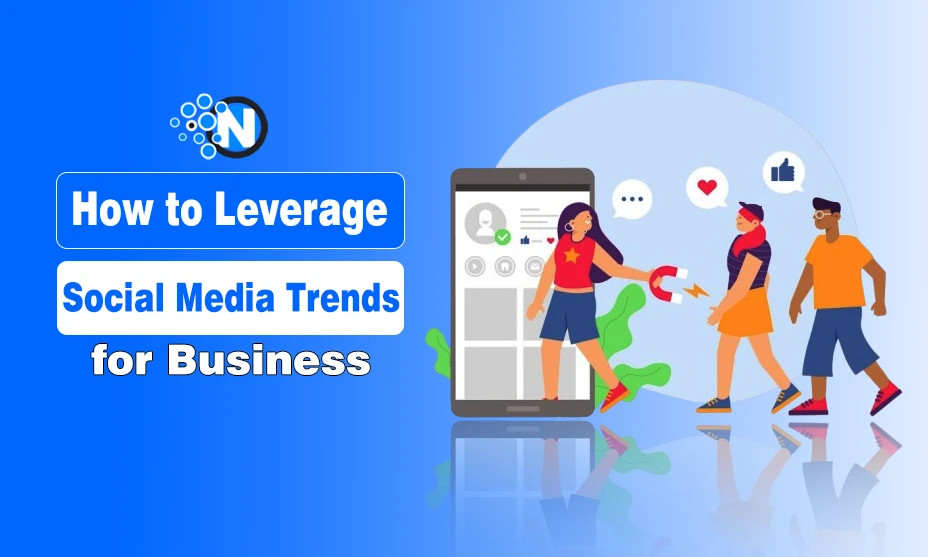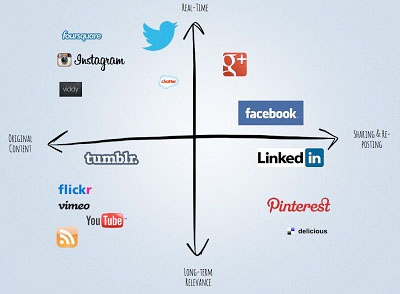5 Tips on How to Leverage Social Media Trends to Drive Real Business Results

Social media isn’t just where people share their vacation photos or what they had for lunch anymore—it’s where business happens.
Social media platforms like Instagram, TikTok, and LinkedIn have become the new battlegrounds for attention, and if you’re not using them to drive actual results, you’re missing out in a big way.
I’ve spent over 20 years helping businesses move beyond the basics, turning social media into a growth machine that drives measurable outcomes.
It’s more than just following trends; it’s about knowing how and when to act.
In fact, 73% of marketing experts say that social media has been “kind of effective” or “very effective” for their business growth—so, what’s stopping you from tapping into that?
Below, I have listed the 5 best tips to leverage social media trends for business and drive real results!
Let’s go throughit together!
How to Leverage Social Media Trends for Business – Top Tips
1: Understand the Current Social Media Landscape
Social media is a constantly shifting ecosystem.
What worked a year ago might not work today, and platforms are evolving faster than ever.
TikTok has taken over with short-form, snackable videos, while LinkedIn has become a hub for long-form professional content.

Each platform has its own language, culture, and, more importantly, audience.
To leverage social media for your business, you need to understand where your audience spends their time and how they consume content.
For example, if you’re targeting Gen Z, TikTok and Instagram might be your go-tos. If your focus is B2B, LinkedIn is probably where you need to double down.
But here’s the kicker: you can’t just guess.
Data should drive your decision-making.
Tools like Google Trends, Hootsuite, and Sprout Social can help you track which platforms are trending, what topics are gaining momentum, and how your audience is engaging.
Social listening tools like Brandwatch or BuzzSumo allow you to stay ahead of the curve by monitoring real-time conversations and trending hashtags.
The key is to stay informed and agile—platforms will change, but if you know your audience, you’ll always know where to meet them.
This agility in your social media strategies will make you feel adaptable and responsive.
2: Create Authentic, Trend-Driven Content
Jumping on trends can be a powerful way to boost engagement—if you do it right.
When your content taps into what’s popular, you’re joining a more extensive conversation and increasing your visibility.
In fact, partnering with a social media marketing agency to create trend-driven content can help you stay relevant and connect more effectively with your audience.
But here’s the catch: chasing trends for the sake of it won’t get you far.
The key is to align trending content with your brand’s core values. Authenticity always wins in the long run.
Your audience can tell when you’re just riding the wave versus when you’re adding something meaningful to the conversation.
Actually, 90% of users say authenticity is necessary when deciding which brands they like and support.
Take the example of Oreo’s “Dunk in the Dark” tweet going viral during the Super Bowl blackout.
It wasn’t just a clever take on a trending moment; it felt authentic to Oreo’s playful and timely brand voice. Or look at Gymshark’s approach to TikTok trends.
They create workout challenges that tap into the latest fitness trends but always stay true to their mission of promoting an active lifestyle.
When done right, trend-driven content is a smart way to grow your reach, but staying authentic is what keeps your audience coming back.
And remember, it’s not just about feeling out the trends; data is your guide here.
Regularly track what’s working and adapt—because the next viral moment is always just around the corner.
3: Time Your Content for Maximum Impact
Timing is everything when it comes to social media.
You can come up with the most brilliant content, but it’ll sink into the digital void if it drops at the wrong time.
So, how do you make sure your posts hit when they’re most likely to gain traction? Here’s the breakdown:
- Ride the wave of trending moments: If you want to be part of the conversation, you’ve got to be timely. Whether jumping into a viral hashtag or responding to a real-world event, relevance is key. When your content aligns with what people are already talking about, your chances of engagement skyrocket.
- Know your audience’s peak activity times: This isn’t a one-size-fits-all situation. While general best practices suggest posting during certain peak hours (like lunchtime or evening commutes), your audience might be different. Use insights from social media tools like Hootsuite or Sprout Social to track when your followers are most active. Experiment with different posting times to see what works best for you. Remember, even the perfect post can only perform well if your audience is online.
- Plan for key events and holidays: Social media calendars shouldn’t be reactive. Use a content calendar to plan ahead for major events, holidays, or cultural moments that align with your brand. Not only does this give you time to craft thoughtful content, but it also ensures you’re prepared when those key moments arise. Think about Black Friday, Earth Day, or even National Pizza Day (hey, there’s a day for everything now!).
- Stay fresh to beat the algorithm: Algorithms prioritize timely, fresh content. If your post is old news, it might need to get the push it deserves. Consistency and relevancy matter—stay on top of trends and engage with real-time conversations to keep your brand visible. Posting right as a trend gains momentum can boost your visibility and push your content to the top of feeds.
4: Leverage Data to Optimize Performance
Creating great content is only half the battle—understanding how it performs is where the real magic happens.
You can’t improve what you don’t measure, so diving into the data is essential for optimizing your social media efforts.
Here’s how to approach it:
Track the right metrics: Not all numbers are created equal.
The three key metrics you should focus on are not just random data points but powerful indicators of your social media performance.
Knowing and tracking these metrics will empower you to make informed and thorough decisions and optimize your strategies.
- Engagement: How many people are engaging with your content? Likes, comments, shares, and clicks indicate how well your audience responds.
- Reach: How many people are seeing your content? This metric tells you whether your content is making it in front of your target audience.
- Conversions: Is your content driving meaningful actions? Whether it’s a newsletter signup, a purchase, or a lead, conversions are the ultimate goal.
Use data to tell a story: Analytics aren’t just numbers on a page—they tell the story of what’s working and what’s not.
If a particular post or campaign performs exceptionally well, dig into the why. Was it the timing? The format? The trend you tapped into?
Likewise, don’t be afraid to look at the flops—there’s a lesson in every misstep.
Leverage the right tools:
- Native platform analytics: Instagram Insights, Twitter Analytics, and LinkedIn Insights—Most platforms have built-in tools that make it easy to track your performance. These are great for getting a quick snapshot of how you’re doing.
- Third-party tools: Want to take things to the next level? Tools like Sprout Social, Hootsuite, and Google Analytics offer deeper insights and allow you to track performance across multiple platforms in one place. These tools can help you identify trends, audience behavior, and even predict the best times to post.
Optimize, optimize, optimize: Data is only valid if you act on it.
Regularly review your performance to see what’s working and where to improve.
Maybe video content outperforms static posts, or your audience is more active in the evenings than in the mornings.
Use these insights to adjust your strategy in real-time.

5: Engage with Your Audience Consistently
In social media, it’s not enough to post content and hope for the best.
The real power comes from consistent engagement with your audience.
Think of social media as a two-way street—you’re missing half the opportunity if you’re not actively interacting.
People crave connection, and regular engagement builds the trust and loyalty that keeps your audience returning.
Here’s how you can keep the conversation going:
- Respond to comments and messages: It sounds simple, but taking the time to reply to comments and DMs is huge. When people see that you’re listening and engaging, it humanizes your brand. Whether it’s a quick “thank you” or a detailed response to a question, those small moments of interaction can make a significant impact.
- Join relevant conversations: Engagement isn’t just about responding; it’s also about proactively joining the discussion. Jump into trending hashtags, comment on posts that align with your brand, and be an active participant in your industry’s community. This positions your brand as approachable and knowledgeable.
- Foster a community: Encourage discussions within your posts and build a sense of community among your followers. Ask questions, run polls, or host live Q&As to get your audience involved. The more opportunities you create for them to engage with you and each other, the more loyalty you build.
- Be consistent: Consistency is key. If you only pop up sporadically, your audience might forget about you or feel disconnected. But regular, meaningful engagement keeps your brand at the forefront of your mind and strengthens relationships over time. Plus, most social media algorithms reward consistent engagement with increased visibility—meaning more people will see your content if you’re engaging.
Conclusion
Social media isn’t just a place to showcase your brand—it’s where real business happens.
But to drive results, it’s about more than just being present; it’s about being strategic.
By understanding the ever-evolving social media landscape and creating trend-driven, authentic content, you can stay ahead of the competition.
Timing your posts for maximum impact and leveraging data to optimize performance will help you fine-tune your strategy.
Consistently engaging with your audience builds lasting relationships that drive measurable growth.
From my experience working with businesses across industries, one thing is clear: those who stay adaptable and data-driven thrive.
Social media trends come and go, but your ability to pivot, experiment, and connect with your audience in meaningful ways will always be your competitive edge.
At the end of the day, social media is not just a platform for likes and shares—it’s a powerful tool for building relationships, fostering loyalty, and driving real results that matter to your bottom line.
If you’re ready to leverage these strategies to unlock growth, the time to act is now.




